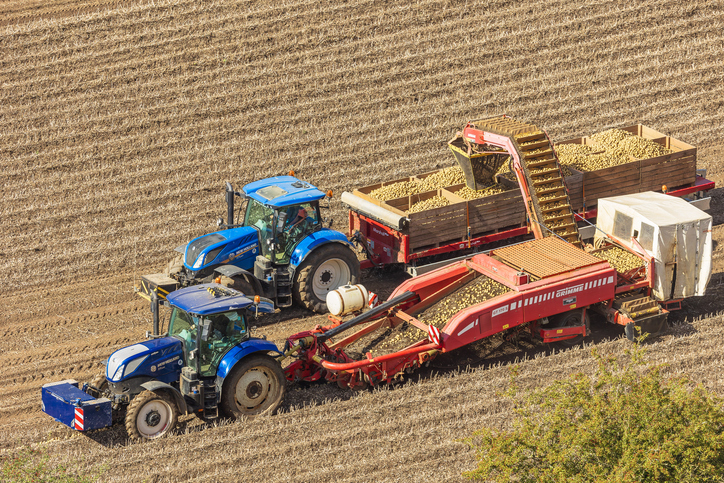Harvesting the potato crop on an industrial scale requires big machines that, to use an oft quoted expression, sorts the ‘wheat from the chaff’ or in the case of the potato crop, separates the potatoes from the clod, stones and other unwanted organic material.
This system uses two contra rotating rollers that extract the clod and stones which are then crushed and ejected back onto the field. The ‘clean’ potatoes are then collected, minus the detritus.
To achieve this, the mechanical separator can be adjusted dynamically, based on the condition of the harvest, for example; dry, wet, muddy, or rocky soil demand different settings.
Although the Potato Separator (when optimised) is very effective, the human element is the weak link. The machine optimisation requires adjustment of several variables:
– Speed control
– Directional control
– Gap adjustment
– Height adjustment
– Angular adjustment
These settings are adjusted by the machine operator – or that is the theory. The reality is that these machines are rarely optimised during the harvest. Can this be automated? If so, machine vision may the answer.

In an ideal world, the machine operator will assess the soil conditions before the harvest is started and using an HMI, make the correct adjustments.
This requires expert knowledge, a modicum of experimentation and patience. None of these operational luxuries may be available.
Can machine vision replace the human factor? We think it can. We’re involved with a UK Research and Innovation project to determine the viability of using machine vision to monitor the potato in-feed and to make adjustments automatically, thereby achieving optimum machine configuration on-the-fly.
Such a system has to ‘recognise’ potatoes, segmenting them from the surrounding material in order to correctly assess the field conditions. This is harder than it sounds as potatoes may be covered in mud and have a very similar appearance to stones. We’re investigating the use of trained neural networks in this application.
Update to follow!